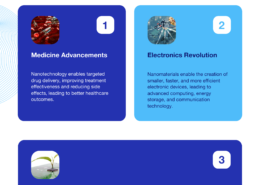The Harappan civilization’s inhabitants can be regarded as the true pioneers of knowledge, technology, and invention in India. Provide relevant examples to support your discussion. (Answer in 250 words)
The Ministry of Science and Technology has notified a citizen-centric National Geospatial Policy (NGP) 2022 that seeks to strengthen the geospatial sector to support national development, economic prosperity, and a thriving information economy. It spells out the vision, and goals for the geospatialRead more
The Ministry of Science and Technology has notified a citizen-centric National Geospatial Policy (NGP) 2022 that seeks to strengthen the geospatial sector to support national development, economic prosperity, and a thriving information economy. It spells out the vision, and goals for the geospatial sector and outlines the strategies for achieving them. It aims to make geospatial technology and data as agents of transformation for achieving the SDGs. The policy proposes the following institutional framework to achieve the aforementioned objectives:
- The government shall constitute a Geospatial Data Promotion and Development Committee (GDPDC) at the national level, which shall be the apex body for formulating and implementing appropriate guidelines, strategies, and programs for the promotion of activities related to the geospatial sector. The GDPDC shall drive the overall development of the geospatial ecosystem.
- The GDPDC would also replace and subsume the functions and powers of the National Spatial Data Committee (NSDC).
- The GDPDC will appropriately modify the concept and function of the National Spatial Data Infrastructure (NSDI) to make the NSDI mechanism more robust, efficient, and effective.
- The Department of Science and Technology (DST) will be the nodal department and the GDPDC shall make suitable recommendations to the DST in the discharge of its functions related to the geospatial regime. The DST shall provide secretarial assistance to the GDPDC.
This policy would strengthen the geospatial infrastructure in the following manner:
- Geospatial data infrastructure:
- The GDPDC will adopt and develop data themes related to 14 global geospatial data themes recognized by the United Nations Statistics Division. It will also develop sectoral geospatial data themes for various sectors like environment, forest, disaster management, mines and minerals, oceanography, agriculture, etc.
- Provisions for efficient access to the National Fundamental and Sectoral Geospatial Data by all stakeholders in the country will be made through the operationalization of a National Geospatial Data Registry (NGDR), which will be a commonly accessible set of registers/catalog of data sets and services.
- Unified Geospatial Interface (UGI) will operationalize to provide consumer-oriented products, applications, services, and solutions using geospatial data.
- The Survey of India (Sol) shall be the agency responsible for developing and operating the NGDR and the UGI in collaboration with the Bhaskaracharya Institute for Space Applications and Geoinformatics (BISAG-N), other institutions, and the private sector, under the guidance and supervision of the GDPDC.
- Standards related to the National Fundamental and Sectoral Geospatial Data Themes would be developed and promulgated after consultation with a broad range of data users and providers.
- Mapping infrastructure: This Policy shall replace the National Map Policy, 2005. The Government will collaborate with private and other agencies to improve geospatial information delivery.
- Role of private infrastructure: The private sector will play a key role in creating and maintaining geospatial and mapping infrastructures, with Sol and various nodal Ministries/agencies in a facilitative role.
- Geospatial Knowledge Infrastructure: It will provide the critical geospatial component to knowledge and automation. Geospatial Knowledge Infrastructure will be enabled by the integration of geospatial data with Fourth Industrial Revolution technologies and the growing digital infrastructure.
Geospatial data is now widely accepted as a critical national infrastructure and information resource with proven societal, economic and environmental value. This Policy is the right step forward in the direction of achieving these goals.
See less


Harappan Civilization: Pioneers of Science, Technology, and Innovation in India The Harappan civilization, also known as the Indus Valley Civilization, is a testament to early advancements in science, technology, and innovation in India. Flourishing around 2500 BCE, the Harappans showcased remarkabRead more
Harappan Civilization: Pioneers of Science, Technology, and Innovation in India
The Harappan civilization, also known as the Indus Valley Civilization, is a testament to early advancements in science, technology, and innovation in India. Flourishing around 2500 BCE, the Harappans showcased remarkable achievements that laid foundational stones for future developments.
Urban Planning and Architecture: Harappan cities like Mohenjo-Daro and Harappa exhibited sophisticated urban planning with grid-like street layouts and advanced drainage systems. The use of standardized, baked bricks for construction ensured durability and uniformity, highlighting their expertise in material science and civil engineering.
Water Management: The Harappans excelled in hydraulic engineering. They developed complex drainage systems and constructed large water storage facilities, such as the Great Bath of Mohenjo-Daro. These innovations reflect their advanced understanding of water management and public health.
Metallurgy: Harappan craftsmen were adept in metallurgy, creating tools, weapons, and ornaments from copper, bronze, and gold. Their advanced metalworking techniques demonstrate a deep understanding of materials and processes, paving the way for future advancements in Indian metallurgy.
Agriculture: The Harappans implemented advanced agricultural practices, including irrigation, to grow crops like wheat, barley, and peas. These innovations ensured food security and supported the development of urban centers.
Trade and Economy: The civilization had an extensive trade network, evidenced by connections with Mesopotamia and Central Asia. They used standardized weights and measures, indicating sophisticated knowledge of mathematics and economics.
Writing and Record-Keeping: The undeciphered Harappan script suggests a developed system of writing for administrative and commercial purposes, reflecting intellectual advancement and organizational skills.
Art and Craftsmanship: Harappan artifacts, such as pottery, beads, and seals, exhibit high craftsmanship and artistic expression. Their intricate designs and techniques indicate a rich cultural heritage and technological prowess.
The Harappan civilization’s achievements in urban planning, water management, metallurgy, agriculture, trade, and arts significantly influenced subsequent cultures, marking them as true pioneers in India’s scientific and technological history.
See less